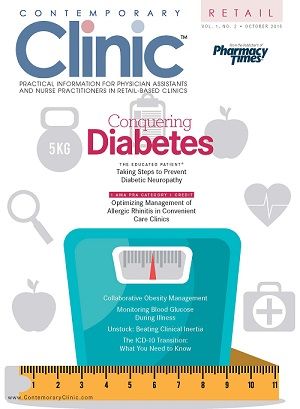Trends and Online Media: Knee Injuries in Young Women on the Rise
As young women become more and more involved in competitive sports, there is a proportional rise in knee injuries among the group; the prevalence is almost 3 times higher than that of young men. According to a review published inThe Nurse Practitioner, recognizing symptoms, risk factors, appropriate treatment, and prevention are key in helping these women stay strong, healthy, and pain free.
When completing a pre-participation physical exam, physicians should address any potential factors that can increase knee pain incidence such as body mass index, specific sports, and the patient’s fitness level. During the exam, it is important to talk to the patient about any pain she might be feeling or has felt in the past (eg, pain from walking up and down stairs, squatting, or during and after physical activity.) Edema and inflammation coinciding with knee pain could also be symptoms of chronic injury. The physician should be sure to rule out any acute diagnosis, as the treatment can be very different.
Once diagnosed, knee pain can be easily managed with nonsteroidal anti-inflammatory drugs, ice, and elevation of the injured leg. An easy way to remember what to do is to follow the principles behind PRICE: pain management, rest, ice, compression, elevation. Proper rest between activities is also key to maintaining proper knee health.
Effective communication and education between the physician and patient will lead to greater prevention of knee injuries. It is important to encourage females to be active, but also to educate them on the consequences of overdoing it and the importance of physical safety so they can have fun and stay in the game longer.

Knock Out Aches and Pains From Cold
October 30th 2019The symptoms associated with colds, most commonly congestion, coughing, sneezing, and sore throats, are the body's response when a virus exerts its effects on the immune system. Cold symptoms peak at about 1 to 2 days and last 7 to 10 days but can last up to 3 weeks.
COPD: Should a Clinician Treat or Refer?
October 27th 2019The Global Initiative for Chronic Obstructive Lung Disease (GOLD) defines the condition as follows: “COPD is a common, preventable, and treatable disease that is characterized by persistent respiratory symptoms and airflow limitation that is due to airway and/or alveolar abnormalities usually caused by significant exposure to noxious particles or gases.â€
Diabetic Ketoacidosis Is Preventable With Proper Treatment
October 24th 2019Cancer, diabetes, and heart disease account for a large portion of the $3.3 trillion annual US health care expenditures. In fact, 90% of these expenditures are due to chronic conditions. About 23 million people in the United States have diabetes, 7 million have undiagnosed diabetes, and 83 million have prediabetes.
What Are the Latest Influenza Vaccine Recommendations?
October 21st 2019Clinicians should recommend routine yearly influenza vaccinations for everyone 6 months or older who has no contraindications for the 2019-2020 influenza season starting at the end of October, according to the Advisory Committee on Immunization Practices.
What Is the Best Way to Treat Pharyngitis?
October 18th 2019There are many different causes of throat discomfort, but patients commonly associate a sore throat with an infection and may think that they need antibiotics. This unfortunately leads to unnecessary antibiotic prescribing when clinicians do not apply evidence-based practice.
